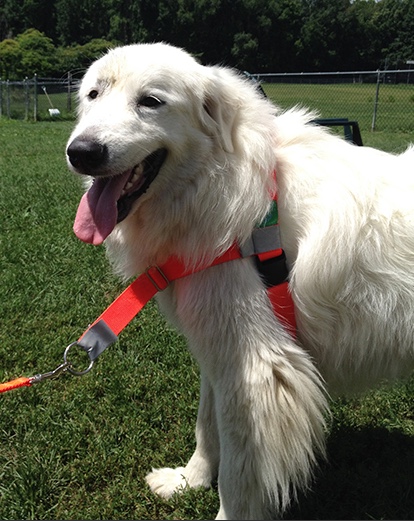“Myth: Harnesses make dogs pull.
Truth: People who follow dogs in harnesses make dogs pull.”
Do you use a gadget like a harness or halti to control your leash-pulling dog? Like all gadgets, they can help, but only if used properly.
It is always preferable to train your dog to walk politely than to resort to tools. But if this impossible then choose a good tool that fits properly and is comfortable for the dog. Unfortunately many of the tools designed for humans to have mechanical advantage over dogs do not consider their well being and comfort.
There is a belief that harnesses encourages pulling. My experience has been that if a dog is in a well fitting harness that does not stress its muscles, it will be more relaxed and comfortable and stop pulling on the lead.
Neck injuries
Wrap your hands around your neck and apply hard pressure. Imagine this pressure on your dog’s neck when he or she is pulling.
If you have a puller, walking a dog with a leash attached to their neck risks serious damage to the delicate neck area. The neck is a weak and sensitive area in your dog’s body, like it is in ours. One incident of pulling or running fast to the end of the leash could cause serious neck damage. Neck injuries could include bruising, whiplash, crushed trachea, damage to larynx and fractured vertebrae.
A common argument I hear for the use of collars is that dogs' necks are strong unlike our necks. In actual fact, the neck of a canine is very much like ours. Both also contain muscles in almost the same places.
Head halters can cause neck injuries
Halters that fit over a dogs head could also cause neck injuries but in a different way to a collar. With the head halter the dog’s neck is twisted to the side or back when the dog pulls.
Head halters cause restriction in the neck, face and on the eye sockets. Ocular pressure can cause serious injury to dogs already suffering thin corneas, glaucoma, or eye injuries.
No-pull harnesses are detrimental to a dog’s structure and gait
Imagine walking with a strap across your chest and shoulders. It will be very uncomfortable and will restrict natural movement.
In a study Christine Zink, DVM, USA, observed that dogs wearing no-pull, front clip harnesses bore less weight on their front legs than they normally would – even when the harness wasn’t attached to a leash! Also, the dogs bore less weight on the leg that was on the far side of where the person walked, even when there was no leash attached. When the dog had a leash attached, it was more significant. This suggests that the dog was reacting to the presence of the harness against the leg by pushing harder against it.
These harnesses stop the dog from extending their forelimbs when walking and running. In all cases, Dr Zink found that the no pull harness altered the gait of the front limbs.
How to choose a well-fitting harness
1. Choose a well fitting harness that distributes weight evenly when the dog is pulling
2. Don't buy a harness that tightens like a slip lead when the dog pulls
3. Does not restrict front leg movement.
4. Does not pinch or rub on one area (like the armpits)
5. Choose one that sits back in the middle of the back, not across the shoulders behind the armpits.
6. Don’t buy a harness that rests on your dogs neck. This is as damaging to the neck as a collar making wearing the harness instead of a collar pointless.
7. Ensure the neck bit of the harness sits below the neck near the prosternum.
8. Easy to put on
Harness recommendation
There are many poorly-designed harnesses out there which place pressure on the the neck and shoulders. The harness that ticks all the boxes for me is the Haqihana Harness. There are other types of harnesses out there (and even ones that are copies of the Haqihana) but this is the one I have experience with.
The Haqihana harness allows the full range of forelimb motion without rubbing or pinching under the front legs. It also sits comfortably on the dog’s chest.
The lead attachment at the top of the dog’s back also prevents it from tangling up between your dog's legs.
On a final note, don't give up training your dog to walk with you. Leash pulling can also be a side effect of other behavioral problems like fear and anxiety. Seek a good trainer who can get to the heart of the problem rather than work on only the side effects.
Not sure how to fit your dog harness? Touch base with us. We would be very happy to help.
Want to know where to buy the haqihana in Australia? Top Dog Harness (I have no affiliation with this company)
References
Emily Larlham, Dogmantics dog training
Whole Dog Journal, July 2013 issue





